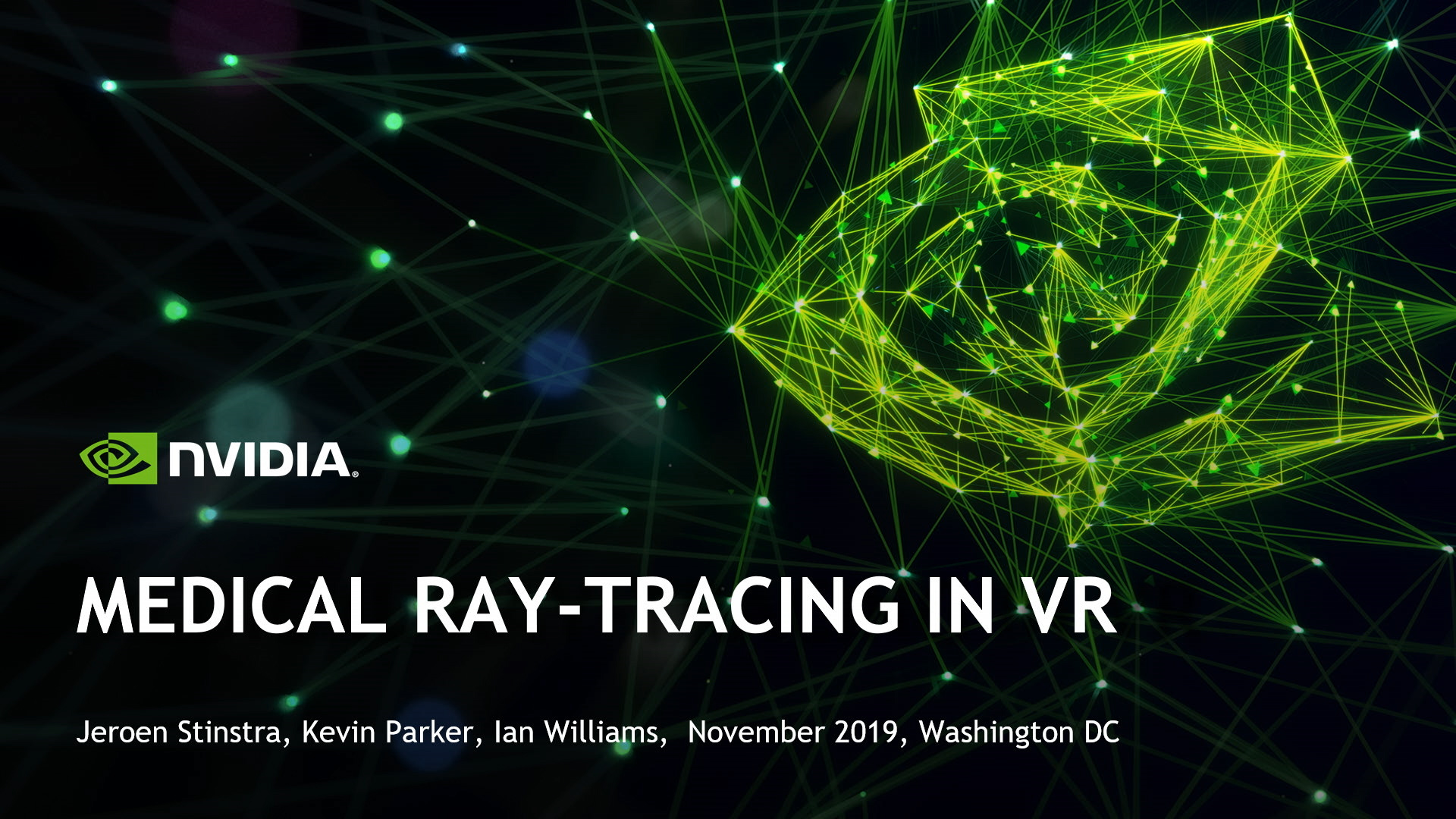GTC-DC 2019: Medical Volume Ray Tracing in Virtual Reality
Note: Viewing this video may require joining the NVIDIA Developer Program or login in
GTC-DC 2019: Medical Volume Ray Tracing in Virtual Reality
Jeroen Stinstra, NVIDIA
We’ll discuss the application of ray tracing to volume rendering, a new technique that improves the visualization of CT images and other voxel-based images. The dynamic application of a transfer function can assign material properties to a selection of the medical image and trace rays through the volume in order to generate images with better depth cues such a soft shadows. Improvements include optional label masks that use the latest OptiX and CUDA technologies to include results from deep learning, tricubic interpolation, and highly-optimized CUDA code. These reduced rendering times make virtual reality possible. In one form, the renderer is encapsulated in a web server so that ray-traced volume renderings can be streamed from an RTX server to an interactive experience in a client browser. In another, it’s encapsulated into a VR application to volume render medical grade images in VR.
View more talks and sessions from this conference
人人超碰97caoporen国产